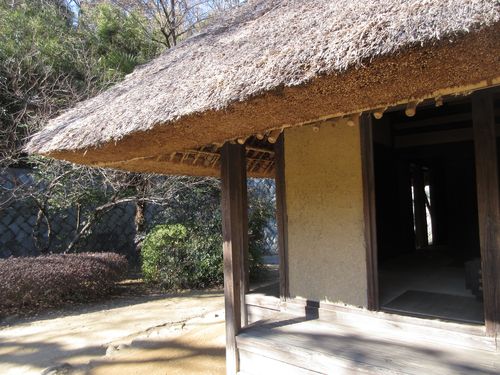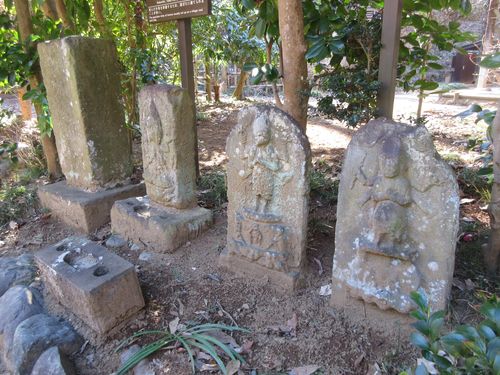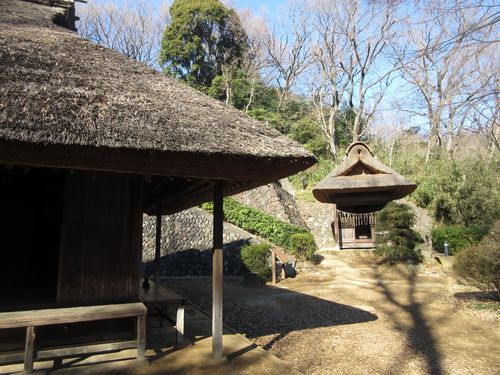Nihon Minka-en - Japan Open Air Folk House Museum: A Japanese Architectural Wonderland
In Ikuta Ryokuchi Park the city of Kawasaki has been assembling an impressive and historical collection of buildings for conservation since 1963 at the Nihon Minka-en. At present there are more than 25 buildings: a variety of Japanese style houses, a shrine, and a Kabuki stage. These impressive structures have been relocated from all over Japan and have been placed in a serene idyllic environment for public viewing. There are a number of interesting exhibitions and activities to participate in throughout the year as well. Some of the activities include: indigo dying classes, tea ceremony classes, folk story telling, and puppet shows. Some recent exhibitions included: “Wonder Folk Tools Collection” and “Jugoya (full moon viewing).”
.jpg)
A wealthy landowner from Kawasaki city owned the Hara House that was built in 1911. It is notable for the impressive large half-hipped roof with pantiles (a type of curved roof tile).
.jpg)
The Suzuki House was relocated from Matsukawa town in Fukushima prefecture and was used as lodging for horse dealers and their horses. It was built in the early 18th century and the traders shared the lodging with their horses who were on the first floor while they slept above them on the second floor.
.jpg)
A volunteer stokes a fire in an irori (a traditional sunken hearth) in the living room of a traditional Japanese style house.
.jpg)
This birds-eye view shows the assorted roof styles used on the different buildings on the grounds.
.jpg)
The distinctive A frame is the defining feature of the Nohara House from Toga Village in Toyoma built in the late 18th century.
.jpg)
The original location of the Sakuda House, built in the late 17th century, was in a fishing community at Kujukuri Beach on the Boso Pennisula of Chiba.
.jpg)
This exotic looking storehouse on stilts was built in the late 19th century and transported from Wadomari town in Kagoshima. It is typical of the style seen in the southern islands - Okinawa, the Amami Islands, southern Kyushu, and Hachijojima.
.jpg)
This Bunto style farm house (two buildings standing side by side) has one building constructed in the 17th century and the other in the 18th century. It was brought here from Kasama City, Ibaraki.

The Kitamaura House is from Hadano City, Kanagawa. It is notable because the precise date of the construction (1687) was found on a stamp when the house was disassembled for transit.

Some ancient stone carvings decorating the grounds of the Nihon Minka-en.

The Kasuga Shrine, behind the house in the foreground, was built in 1863 and was moved from the temple grounds of Tokoin in Kawasaki City, Kanagawa when it became too expensive for the temple to maintain.
The architectural wonderland that is the Nihon Minka-en, may be the top attraction in the area. However, it is not the only attraction at Ikuta Ryokuchi Park. It is also home to the Kawasaki Municipal Museum, which has a state of the art planetarium, the Taro Okamoto Museum of Art, a Rose Garden, and the Fujiko-F-Fujio Museum, a museum devoted to the manga creator of Doraemon and Perman. The park is a mere 13 minute walk from Mukogaoka-Yuen station (which can be reached in less than 30 minutes by express train from Shinjuku). This makes for an ideal day trip with something for everyone while visiting the Tokyo area.
Opening hours
[Mar. - Oct.] 9:30 – 17:00
[Nov. - Feb.] 9:30 – 16:30 *last admissions 30 min before closed time
Closed on
Monday (open on holidays)
The day after Japanese national holidays (open on Saturdays and Sundays)
Year-end holidays and New Year’s holidays (from December 29 to January 3)
Admission Fee
Adults ・・・・・・・・・・・・・・・・・・・・・・・・500 yen
Students (Senior High School, College) ・・・・・・・・300 yen★
65 years and over (Kawasaki City residents: Free) ・・・300 yen★
★=ID cards presence requested.
- Please notify the office one week in advance of your vising day if you are planning to visit as a group.
Information
- Some wheel chairs and baby carriages are available.
- A small table for changing babies’ diapers is provided in the restroom near No. 9 Nohara house.
- Some restrooms are available for handicapped persons.
- Please notify the main office in advance if you are planning to:
- use tripods or easels.
- enter the houses for research purposes.
- use any of our artifacts or properties for photographic props etc.
- Taking commercial photographs is prohibited.
- Entering with pets is not allowed.
Patrick McCoy is American writer based in Tokyo who has been published in The Japan Times, The Daily Mainichi, The Asahi Shimbun, Tokyo Classified and Eye-Ai Magazine.
Looking for inspiration? ZenVita offers FREE advice and consultation with some of Japan's top architects and landscape designers on all your interior design or garden upgrade needs. If you need help with your own home improvement project, contact us directly for personalized assistance and further information on our services: Get in touch.
SEARCH
Recent blog posts
- November 16, 2017Akitoshi Ukai and the Geometry of Pragmatism
- October 08, 2017Ikebana: The Japanese “Way of the Flower”
- September 29, 2017Dai Nagasaka and the Comforts of Home
- September 10, 2017An Interview with Kaz Shigemitsu the Founder of ZenVita
- June 25, 2017Takeshi Hosaka and the Permeability of Landscape
get notified
about new articles
Join thousand of architectural lovers that are passionate about Japanese architecture